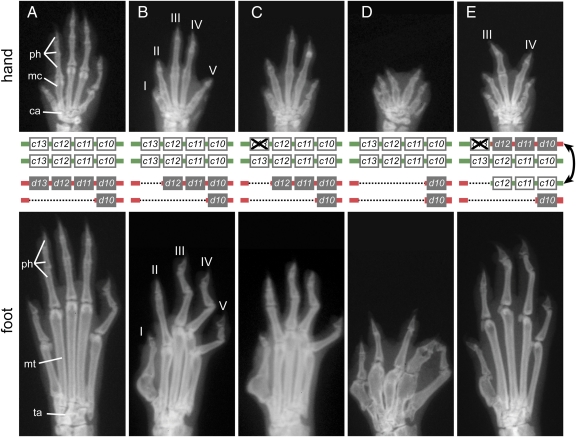Fig. 2.
Phenotypic rescue of Hoxd loss of function in limbs by Hoxc genes under the control of the HoxD regulatory landscape. X-ray images of distal forelimbs (hand, Top) and hind limbs (foot, Bottom) with a schematic of the genotypes (Middle) are shown. Whereas mice heterozygous for a deletion of Hoxd11 to Hoxd13 display an almost wild-type limb (A), removing the second dose of Hoxd13 leads to distal malformations (B). (C) The additional inactivation of one allele of Hoxc13 has no effect. (D) Mice homozygous for a deletion of the three posterior Hoxd genes display a severe distal limb phenotype. (E) Exchanging the 5′ regulatory landscapes of the HoxC and HoxD clusters leads to a significant rescue of the hand skeleton. Digits III and IV of the forelimb are markedly increased in size, with their metacarpals now close to normal in size and morphology. A spectacular rescue is observed for the foot, in particular in the overall aspect of metatarsals and in the number of phalanges. However, the big toe is not equally rescued and still shows the same mutant aspect as in D. ph, phalanges; mc, metacarpals; ca, carpals; mt, metatarsals; ta, tarsals.

